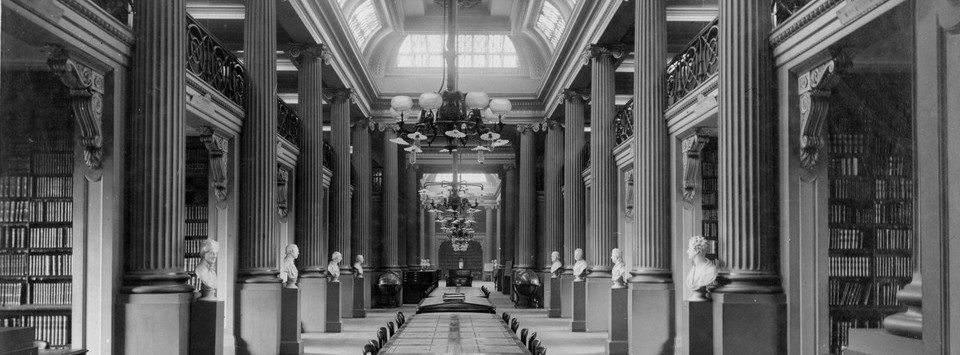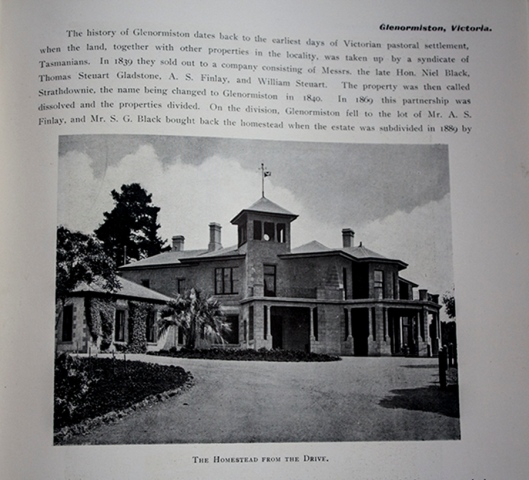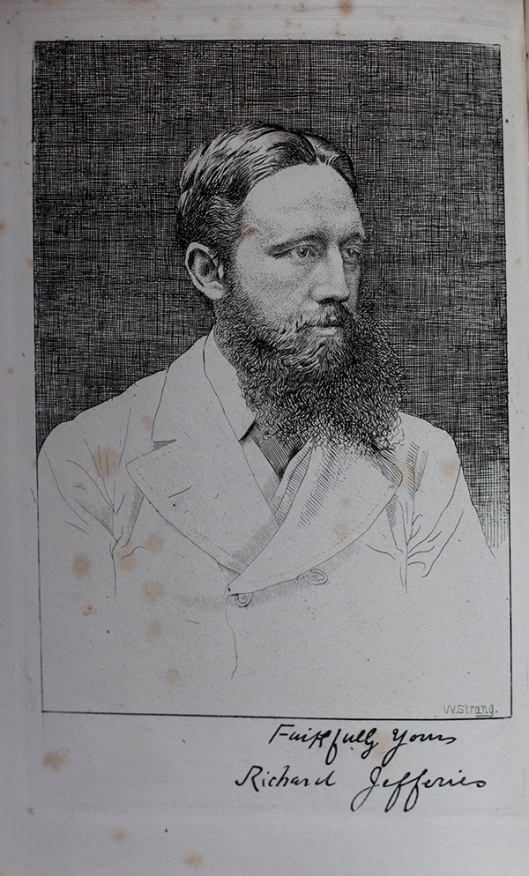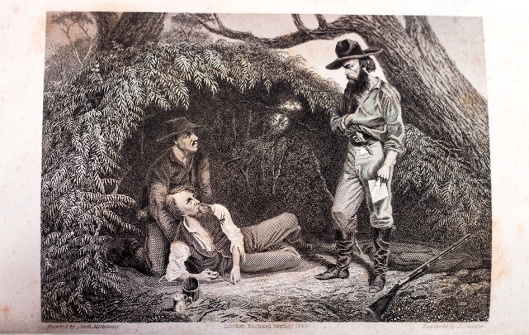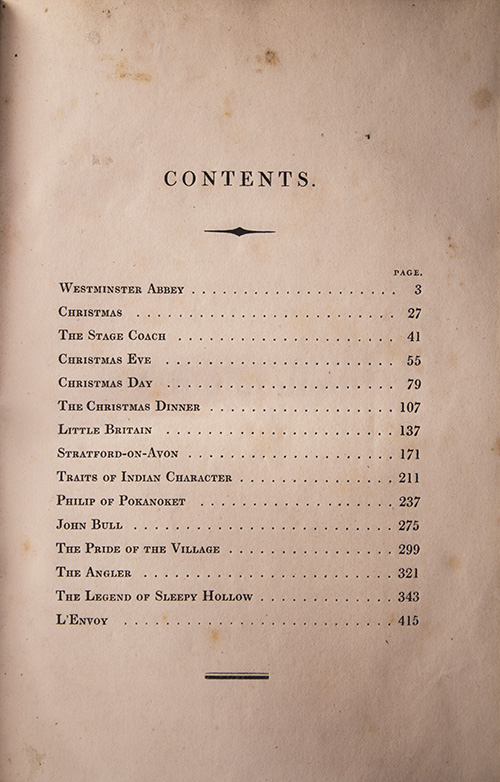Tags
Arthur John Staughton, Glenormiston, Hugh Strahorn, Keayang, Killarney, Lincoln sheep, Linton, Merrang, Middlefield, Mount Talbot, O. H. Carter, Pastoral Homes of Australia, Pastoralists Review, Rear Admiral A.W. Carter, Robert Hood, Shearers, Thunderbolt, Western District, Wiliam Frederick Buchanan, William Officer
Part 2 of The Pastoral Homes of Australia, 1910 -1914, Volume G to M, with a selection of some of the beautiful properties that feature in this volume. Pictured below is the homestead at Glenormiston, Victoria then owned by Steuart (sic) Gladstone Black. ‘The famous Glenormiston butter factory is situated close to the gate leading into the Glenormiston Estate. The factory turns out one of the best brands of Victorian butter at an average rate during December of about 3 tons per day. The factory itself is an up-to-date establishment . It is built of bluestone, which besides being solid, keeps remarkably cool in summer.’
The charming picture below of girls bottle feeding orphaned lambs is at the Linton estate in New South Wales, then owned by O.H. Carter and Rear Admiral A. W. Carter. ‘It was here the famous bushranger “Thunderbolt”, spent some time before launching out on his deeds of outlawry, being employed on Ironbark Station breaking in horses prior to 1866. He never interfered with any residents thereabout, although he kept a supply of horses at Bullseye Creek, near where the present Linton homestead stands.’
An unusual subject for these Volumes is pictured below – that of outdoor cooking for the shearers and shed Hands at Middlefield, New South Wales, then owned by Hugh Strahorn. The property comprised about 50,000 acres with a flock of about 8,000 pure Merino sheep.

Shearers and Shed Hands Cook, Middlefield, New South Wales, ‘Pastoral Homes of Australia’, 1910 – 1914.
The shearing shed of the Killarney estate, New South Wales is pictured below, then the property of William Frederick Buchanan.‘The woolshed is without doubt one of the most notable in the State…Mr Buchanan designed it himself…all the timber used in its construction was cut on the estate. The shed is 350 feet long and 60 feet wide, and is supported on piles 8 feet from the ground. In addition, and under the same roof, there is a large wool-scouring room measuring 80 feet by 80 feet…The shed is fitted with sixty stands of Wolseley machines…A feature of the Killarney shed is the travelling belt running down the centre of the board carrying all the fleeces from the shearers into the wool-room.’
Pictured below is ‘Milking Time’ at Keayang near Terang, Victoria, then owned by Arthur John Staughton and partly tenanted by a number of dairy farmers. In 1901 a pure Lincoln sheep stud was established at the property. ‘One of the methods adopted by Mr Staughton for increasing the carrying capacity of his property has been in planting English grasses. Among the most successful of these has been the English rye grass and meadow foxtail, which grow profusely on the flats and give a delightful tinge of green to the landscape at seasons when the natural pasturage is mostly burnt and brown.’
The Merrang estate near Hexham, Victoria then owned by Robert Hood comprised about 12,700 acres of which 3,000 acres were leased to farmers with 13,000 sheep kept on the rest. Mr Hood’s father had established a Lincoln sheep stud in 1872 ‘he decided to go to the very fountainhead of Lincoln purity and excellence, so sent to England for a large shipment . Eleven rams were imported from the famous studs of Messrs. Marshall and Kirkham, of Lincolnshire and thirty three ewes were obtained from the same sources.’
Pictured below is the Engine-Room and Workshop at Mount Talbot estate, Victoria then owned by William Officer and comprising about 14,000 acres with about 11,000 Merino sheep shorn annually. ‘Mount Talbot was among the first properties on which shearing was done by machinery. It being twenty years ago since the blade shears were last used there.’
